I went on a budget and a luxury safari in Africa. Here's how they compare and the one thing you really need to look for when booking.

- I have been on two glamping safari trips in Africa on two very different budgets.
- My all-inclusive stay was great but my cheaper glamping experience was fine, too.
I've been on two African safari trips. Both involved glamping but on completely different budgets.
My first more affordable trip, a lodge in South Africa with separate safari excursions, cost me about $1,100. My second, an all-inclusive lodge in Tanzania, cost me about $4,000 after a 50% off deal.
Here's how the two compare and what I think you should look for before you plan an African safari.
My affordable safari experience was at Jackalberry Ridge, where some tents cost $80 a night.
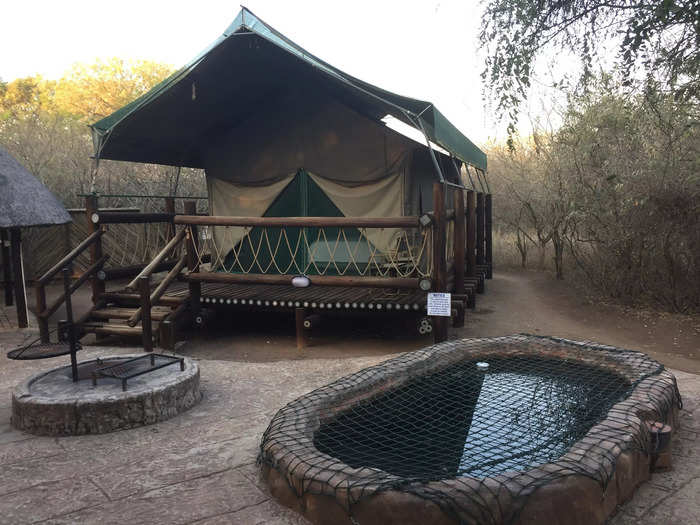
The first time I went on a safari, I went to Kruger National Park in South Africa. I didn't book a tour package, instead opting to stay at affordable lodging and book safari day trips to the park.
I stayed five nights near Kruger and one night in Johannesburg before my flight home. I spent around $1,100 for lodging, safari tours, a rental car, and food (not including flights).
After landing in Johannesburg, I rented a car ($130 for five days) to drive to my lodging in Marloth Park, a town bordering the edge of Kruger National Park.
I was staying at Jackalberry Ridge, a self-catering accommodation with no on-site restaurant, no room service, and limited housekeeping.
The one-bedroom tents at Jackalberry Ridge go for as low as $80 a night, and two-bedroom tents go for $135.
When I checked in late, there was no one at the reception desk — just an envelope with my name on it containing my keys and a map.
My main tent felt pretty spacious, with a king bed and a living-room area.
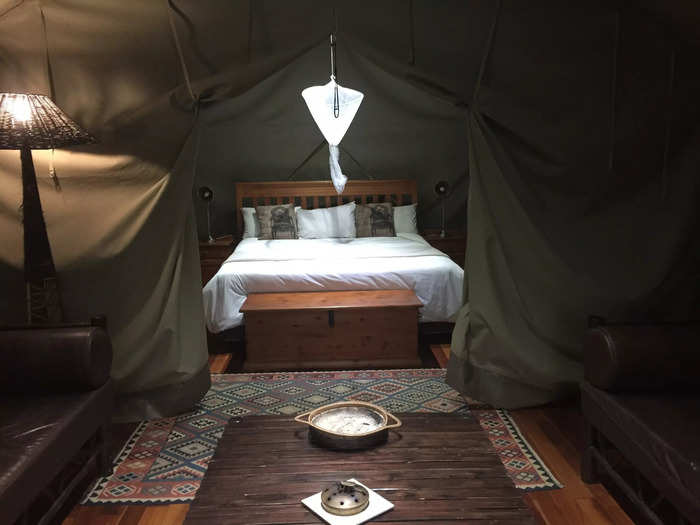
I had booked a two-bedroom unit (two tents), but my friend couldn't come at the last minute. Since I couldn't change the reservation, I still stayed in the two-bedroom unit and my friend paid her share.
The campsite came with a small pool to dip in, but it was covered as the weather was pretty cold.
Each unit had a private bathroom and kitchen in a building separate from the tents, so I needed to leave my tent to use the bathroom at night.
The bathroom was standard, with a tub, shower, and toilet.
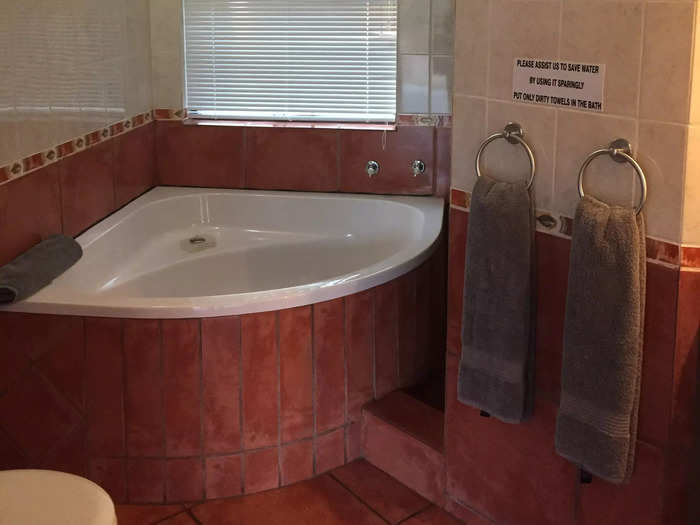
This is glamping, so I had access to running water and a flushing toilet. I had hot water, but I found it went from scalding hot to cold in a few seconds.
I ended up taking quick showers and just washing my hair with cold water, which wasn't ideal since it was a little chilly in the morning.
It's also worth noting that Jackalberry Ridge was renovated recently, so the issue I had with hot water may have been fixed now.
I also had access to a kitchen in the same building as the bathroom.
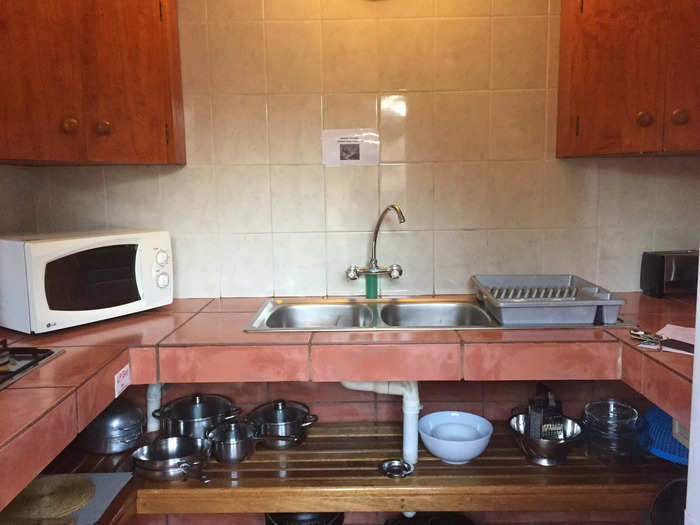
The kitchen was well-equipped with things like pots, a microwave, and a sink, so I could cook meals or heat up leftovers.
I signed up for a couple of day safaris and did one at night.
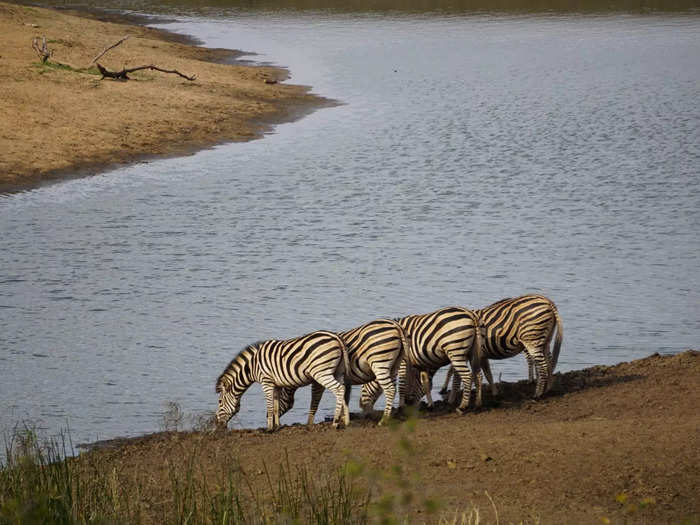
Although I had a rental car and could've done a self-drive safari around Kruger, I didn't trust myself to spot animals while focusing on the roads.
Instead, I signed up for a couple of day safaris and one night safari. The safari tour prices often don't include the park entrance fee (about $25 per person per day), which I paid when I got to the entrance.
My three safari trips and park fees came to around $280.
I got to see zebras, giraffes, and more.

I saw a lot on the safari, including zebras, impalas, kudus, and giraffes. I saw lions and a leopard, although only from afar with binoculars. I even got a glimpse of the elusive rhinoceros.
I also spent one day taking another popular day trip in the area, the Panorama Route. This scenic road goes past Lisbon Falls and the beautiful Blyde River Canyon. The guided tour was $110.
As far as my very first safari trip goes, it was great. I got to see the Big Five, even though some of them were pretty far away.
For my next safari trip, I leveled up.
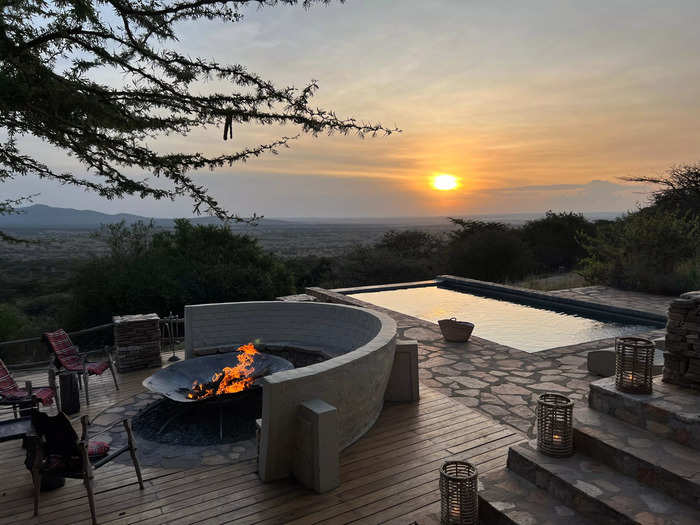
I saw a Travelzoo deal for an all-inclusive safari at Taasa Lodge, a five-star luxury safari in Tanzania.
The deal was $6,000 for two people for a whole week — the lodge is usually $12,950 for two for seven nights. It was still a splurge, but I'd be saving more than 50% on a bucket-list experience.
The package came with seven nights of lodging, two safari activities a day, three daily meals, and drinks.
Still, we spent more than the original advertised price. There are obligatory "daily government park fees" and "daily concession fees" that added about $893 per person to our bill.
We also had to take a regional flight to get to Taasa, which was more expensive than my rental car in South Africa.
To redeem the Travelzoo deal, we had to complete our booking through a specific travel agency.
We ended up opting for an all-inclusive add-on package which includes the $893 fees above, domestic airfares from Arusha to Taasa (which would already cost around $600), and our agency arranging our Tanzanian tourist visa and airport transfers. The add-on also included extra activities at the resort (more on that later).
Overall, we paid $1,715 per person on top of the $3,000 each for the lodge stay.
I hadn't anticipated paying so many extras, but it was nice to have someone take care of the logistics of getting to the resort.
My tent was luxurious and equipped with a comfortable king bed and a large living room.
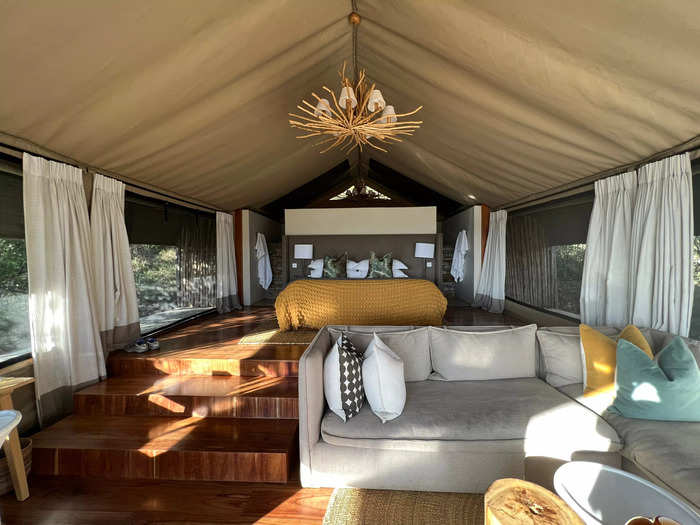
When I arrived at the lodge, the staff greeted me with a glass of juice and a wet towel to refresh myself.
My tent was quite spacious. I especially liked that it had a desk and plenty of outlets I could use to charge my electronics. Our bathroom was behind our bed, and I was glad it was inside the tent this time.
We also got a butler who kept track of our schedules and made sure we had what we needed.
The bathroom felt spacious, with two sinks and a shower.
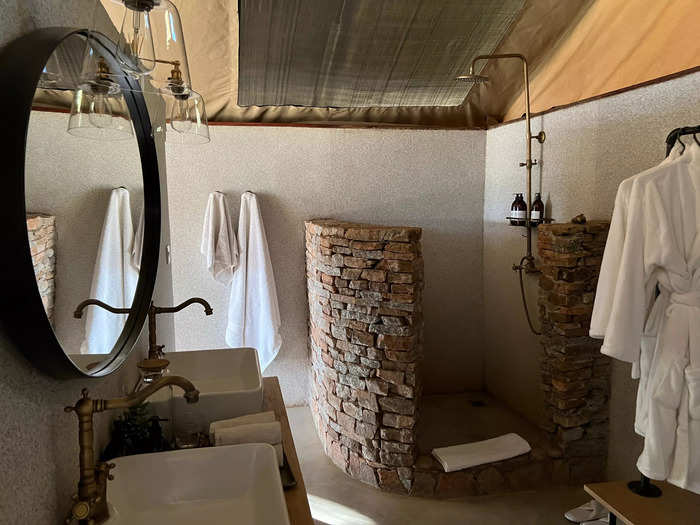
The shower's hot water was great and we had double sinks we could get ready at.
Another perk of the lodge is that we could have staff do our laundry every day, which meant we could pack less clothing.
There's a main lodge with a communal living room, dining area, and bar.
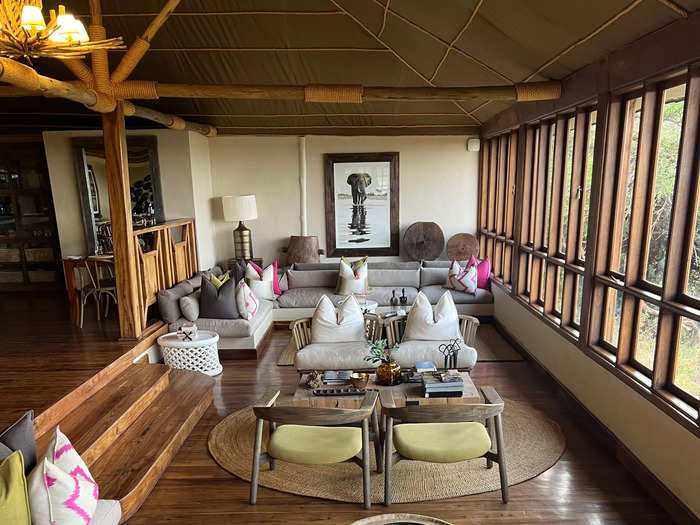
We got breakfast at the buffet in the main lodge unless we were going on a morning safari.
Most people ate dinner in the dining room, but we could've requested to have food brought to our tent.
We also passed a small pool next to the main lodge.
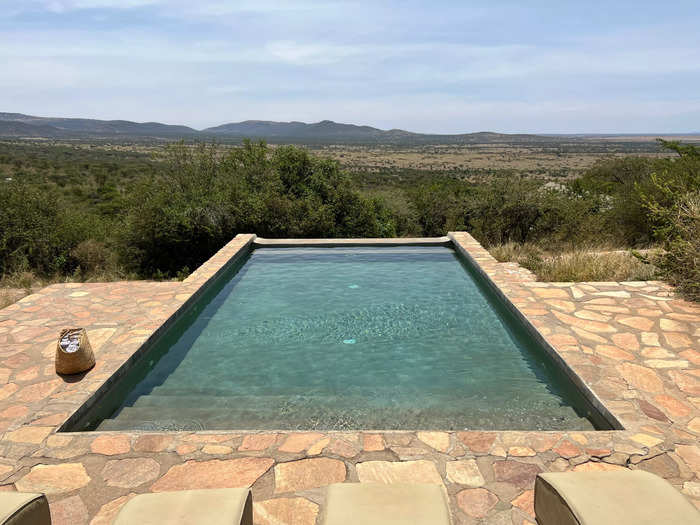
The pool was on the small side, but certainly had great views.
I didn't end up using it as my afternoons were filled with safari, and the mornings and evenings were chilly.
On the mornings with an early safari, we had a simple breakfast next to our Land Cruiser.
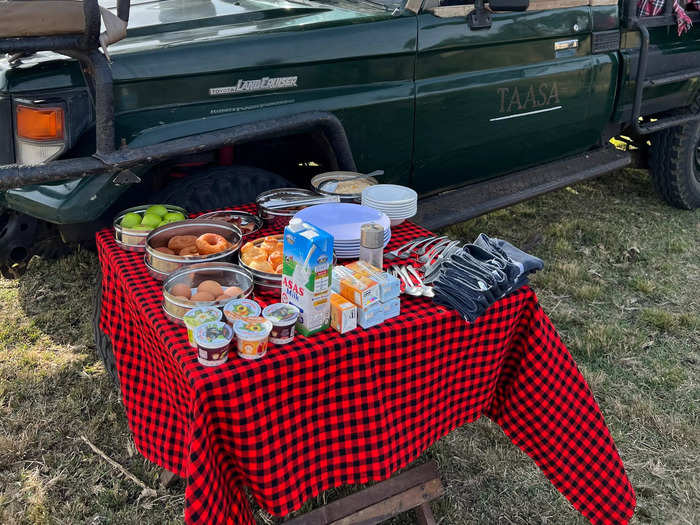
Safari breakfasts consisted of hard-boiled eggs, yogurt, doughnuts, bacon and sausage, fruits, and orange juice. Staff also made French-press coffee, which we could spike with cream liqueur.
Our Land Cruiser had a cooler of beers and sodas in the back, too.
At the private game reserve, we got pretty close to wildlife.
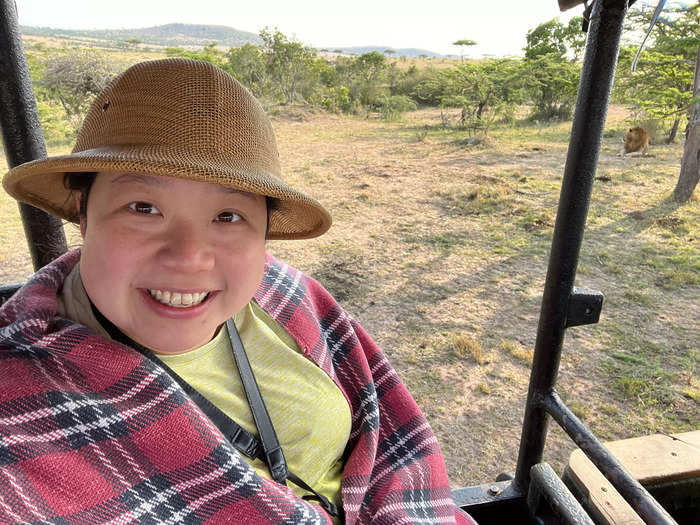
Taasa is located inside a private game reserve, which means staff can pretty much drive anywhere within it. This was a huge leg up from my day trips in Kruger National Park on my last safari.
Inside national parks like Kruger or Serengeti, you're only allowed to drive on designated roads for safety reasons (both for the tourists and the animals).
But in a private reserve, guides can drive offroad. Plus, the guides communicate with each other when they find something special.
We saw a bunch of animals in the private reserve and Serengeti.
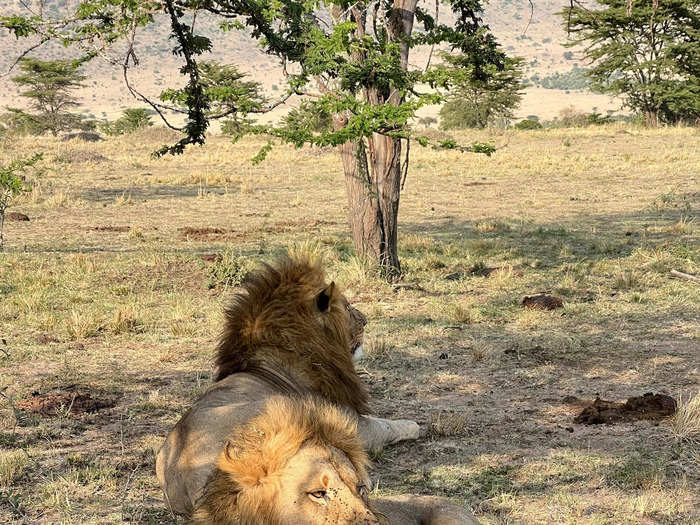
We also left the reserve to spend a couple of days going into Serengeti National Park, as there were things you could only find there instead of within the private reserve.
For example, I'd planned my trip to take place during the Great Migration, and I wanted to see wildebeests crossing the Mara River.
We also went to Serengeti to find rhinoceros and hippopotamus.
Every dinner at the resort consisted of three courses: soup, an entrée, and a dessert.
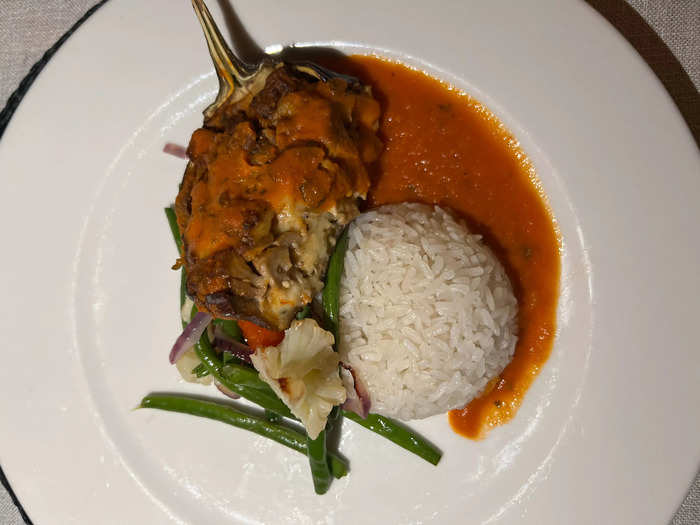
The main course was usually some type of Western food, and there was always a vegetarian option.
It would've been nice to be offered more typical Tanzanian dishes, though. For me, part of the fun of traveling is learning about different countries' cuisines.
I also had access to an open bar in the main lodge. Staff could make simple cocktails, and there was lots of beer and wine. The drinks were all included with the price of the stay (except for fancy Champagnes and select wines).
One morning, we had a special breakfast on the plains.
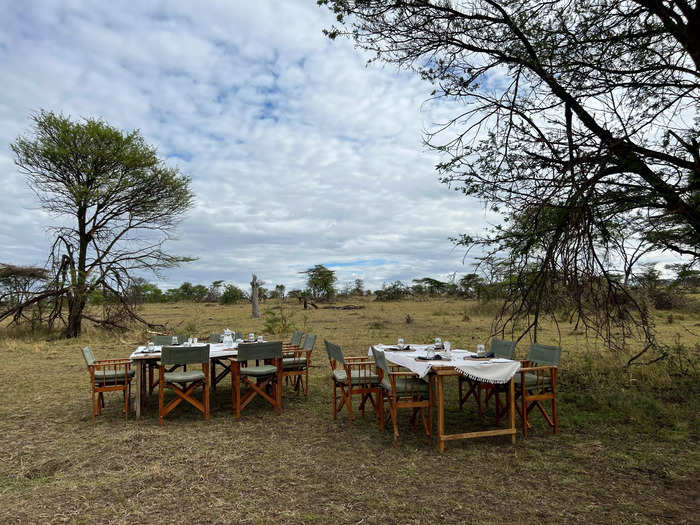
On one day of the trip, we had a special bush breakfast. It was one of the extra activities we got with that special add-on package.
Instead of our usual safari breakfast, we had freshly prepared omelets in the wild.
We also got another special treat in the bush that morning — a toilet!
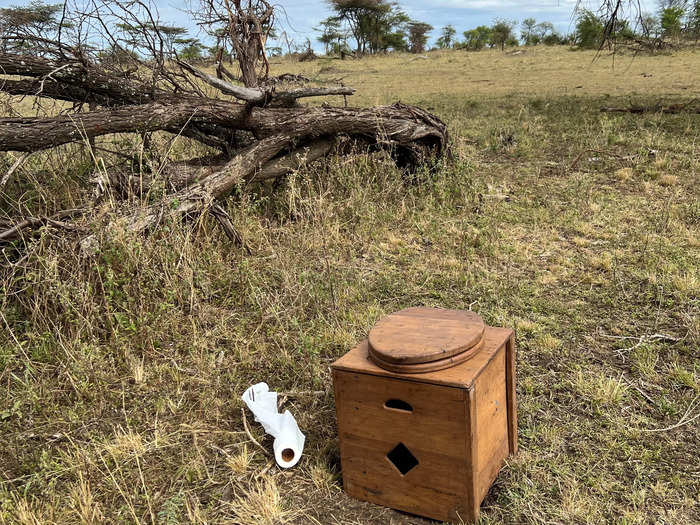
When you're offroading looking for wild animals, you can end up pretty far from a proper toilet.
On most safari days, the car stops (when guides think it's safe), and people go behind the car to do their business.
This was the only time we had this portable toilet while out on a safari. On my budget safari day trips at Kruger, we'd have to wait until we reached a rest-stop facility.
Again, we spent a lot of time watching lions.
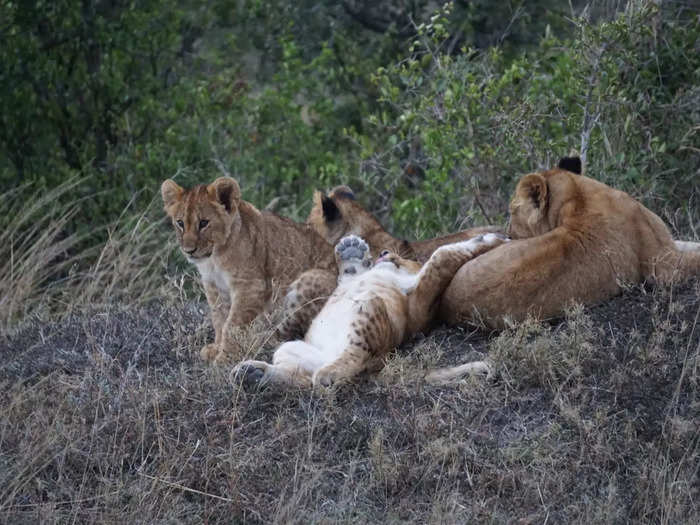
After breakfast, we were back in safari mode.
We found a family of lions, and as we were in the private reserve, we were able to stay and watch the cubs play for quite a while.
At Kruger, when lions are spotted, traffic starts backing up on the road as all the safari cruisers stop to look, so you can't stay too long.
Here, we knew no one else would be coming.
On a different morning, our guide got a tip that another car had found a leopard sleeping.
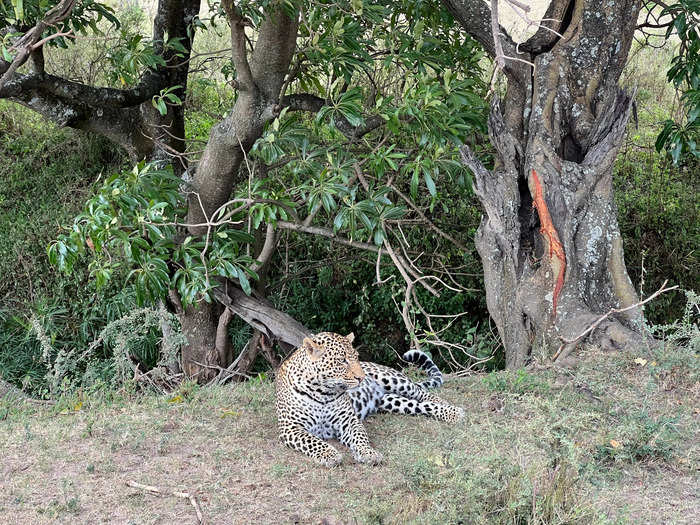
The communication between guides in the private reserve paid off when one spotted a sleeping leopard.
When our group arrived, the leopard was napping on the tree next to his catch. Eventually, it came down, and we got a better look.
Our trip ended with a great happy hour and outdoor dinner.
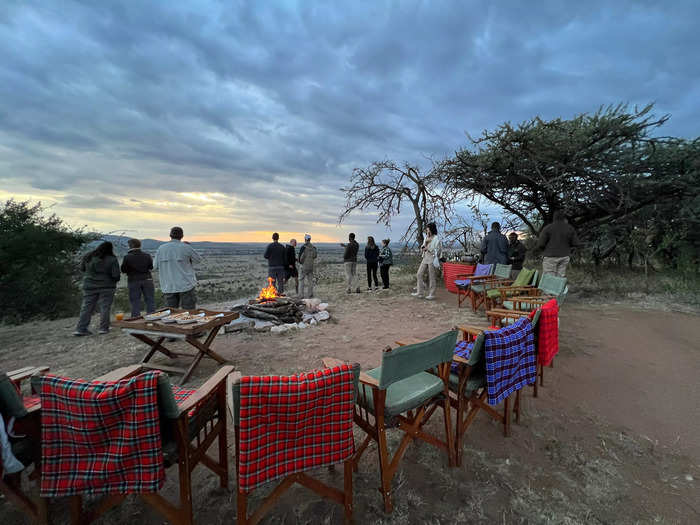
Other activities that were part of our add-on package included a visit to a Maasai village in Kenya and a special happy hour and barbecue dinner.
And, for our journey home, the travel agency took care of everything, including transfers, until we boarded our international flight.
My big takeaway is that it's really worth paying to be inside a private reserve.
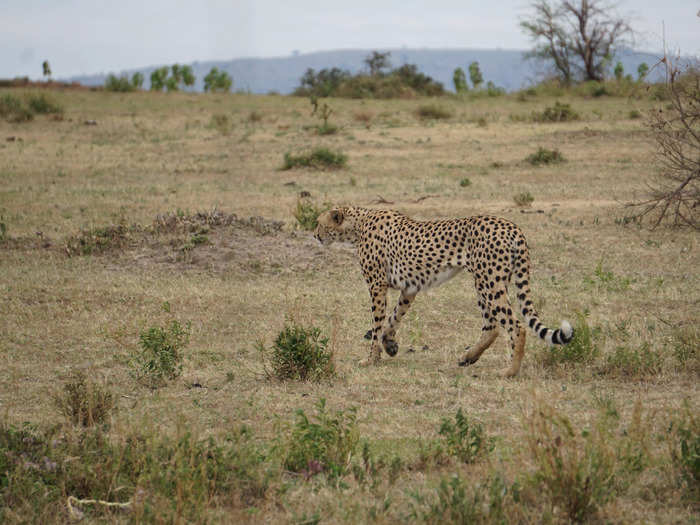
In my opinion, the difference between these two safari trips that's the most worth paying for is being in a private reserve.
After all, the main reason I fly to Africa is for the safari, not the glamping.
I much preferred my lodging at Taasa, mostly because of the bathroom. But if I hadn't had the 50% off deal, I'm not sure the full price would've been worth it.
Still, it was a wonderful experience, and if I had more money, I may feel differently. Even so, the budget glamping was pretty comfortable and just fine for a week.
But again, as far as the safari experience goes, the private reserve is hard to beat. Being able to go offroading and get closer to the animals is quite the experience.
And if luxurious lodges are out of the question, private reserves can also be visited more affordably. Some lodges inside private reserves, like Shindzela or Rhino River Lodge, can cost around $250 per person per night.
Popular Right Now
Advertisement